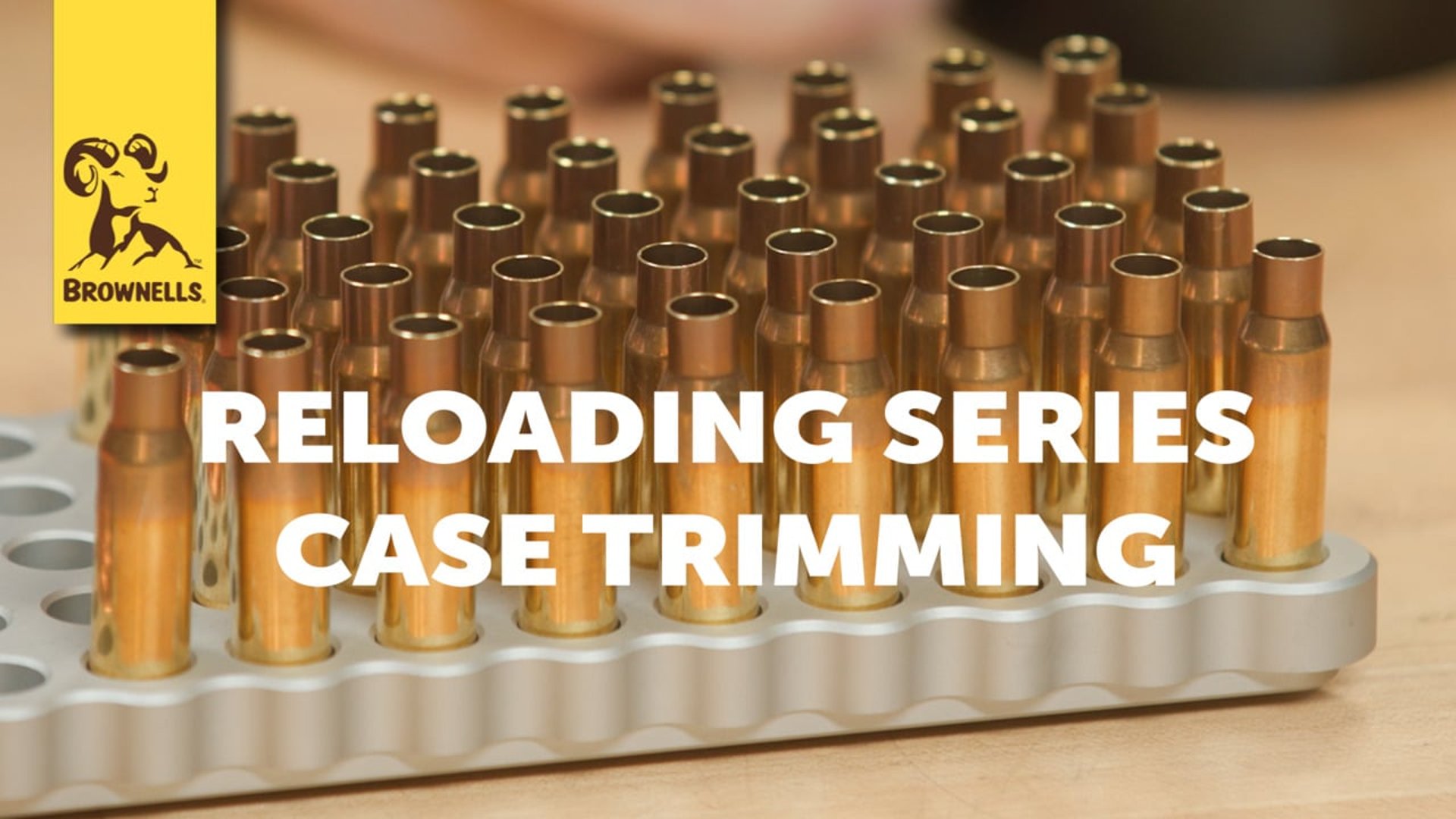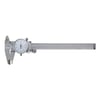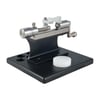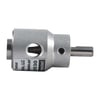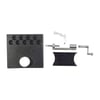Reloading Series: Case Trimming
Introduction to Case Trimming
Hi everyone, Caleb and Steve here from Brownells! Welcome back to our reloading series. Today, we’re talking about case trimming, an important step in maintaining consistent and safe reloads. Whether you’re reloading military brass, range pickups, or high-precision rounds, trimming ensures your brass stays within spec. Let’s dive into why trimming is necessary and how to do it efficiently.
Why Trimming Brass is Necessary
If you’re new to reloading, you might wonder: why do I need to trim my brass? Steve explains that trimming becomes necessary after repeated firings because brass cases tend to stretch over time. This stretching occurs due to the pressure generated when the cartridge is fired and resized during reloading. Overgrown cases can cause two major problems:
Inconsistent crimping, leading to poor neck tension and reduced accuracy.
Increased chamber pressure, especially if the case mouth extends into the rifle’s lead, restricting bullet release.
While factory-new brass generally doesn’t need trimming, range pickups or military surplus often require immediate attention.
Common Issues Caused by Overgrown Brass
Caleb highlights the problems caused by overgrown brass. If a case is too long, the crimp won’t seat properly, affecting neck tension and accuracy. In extreme cases, long brass can raise chamber pressures, potentially damaging the firearm or causing malfunctions. Regular trimming keeps your reloads consistent and your firearm safe.
Tools for Trimming: Sinclair/Wilson Setup
For today’s demonstration, we’re using the Sinclair/Wilson Trimmer setup. This tool is highly regarded for its precision, especially among long-range shooters. The case is held concentrically in a bushing, ensuring a uniform cut every time. The trimmer’s adjustable micrometer allows you to fine-tune the cut length with incredible accuracy.
Steve also points out that similar tools are available from brands like RCBS, Hornady, and Lyman, catering to a wide range of preferences and budgets.
Quick Trimming with the Little Crow Gunworks Tool
Another option we demonstrate is the Little Crow Gunworks Trimmer, a fast and efficient tool for trimming large batches of brass. This device attaches to a drill press or hand drill, making it ideal for bulk operations like converting .223 brass to 300 Blackout. It’s preset to a specific trim length, but you can adjust it if needed.
Measuring Brass Length and Trim Specs
Before trimming, it’s essential to measure your brass to determine how much needs to be removed. Using a caliper, Caleb measures a fired .308 case and compares it to the trim specifications listed in the reloading manual. For .308, the maximum case length is 2.015 inches, with a recommended trim length of 2.005 inches. Always consult your manual for the correct dimensions for your caliber.
Step-by-Step Trimming Demonstration
With the Sinclair/Wilson Trimmer, Caleb walks through the process step by step:
- Insert the case into the caliber-specific bushing.
- Secure the case in the trimmer by tapping it into place with a delrin block.
- Adjust the micrometer to the desired trim length.
- Turn the cutter in the correct direction, shaving off the excess brass.
- Once trimmed, the case is ready for further processing.
Chamfering and Deburring Edges
After trimming, the case mouth will have sharp edges that need to be smoothed out. Using a chamfering and deburring tool, Caleb demonstrates how to remove these sharp edges. This step is critical to prevent the case from shaving the bullet jacket during seating, ensuring consistent performance and accuracy.
Case Prep Stations for High Volume Trimming
For those working with large quantities of brass, consider investing in a case prep station. Brands like Hornady, RCBS, and Sinclair offer motorized units that combine trimming, chamfering, and deburring into one efficient process. These stations save time and effort, making them ideal for competitive shooters or reloaders processing hundreds of cases at a time.
Trimming Brass for Precision Shooting
Steve emphasizes that precision shooters should pay extra attention to case trimming. The Sinclair/Wilson Trimmer holds the case perfectly concentric, minimizing runout and ensuring consistent performance. This precision is essential for long-range shooting, where even small variations can affect accuracy.
Do You Always Need to Trim Brass?
Not every reloader needs to trim brass. If you’re loading pistol calibers like .45 ACP, you’ll rarely encounter cases that need trimming. However, for revolver calibers like .357 Magnum, trimming can be important to maintain consistent crimps for accuracy. Caleb recommends evaluating your specific needs and adjusting your process accordingly.
Special Considerations for Pistol Brass
Steve shares that most pistol calibers, especially semi-auto rounds, don’t require trimming. However, if you’re reloading revolver calibers, consistent case length ensures uniform crimps, which is critical,




